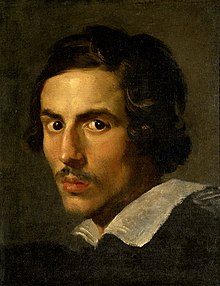Gian Lorenzo Bernini | |
|---|---|
 Self-portrait of Bernini, c. 1623, Galleria Borghese, Rome | |
| Born | Gian Lorenzo Bernini 7 December 1598 |
| Died | 28 November 1680 (aged 81) Rome, Papal States |
| Known for | Sculpture, painting, architecture |
| Notable work | David, Apollo and Daphne, The Rape of Proserpina, Ecstasy of Saint Teresa |
| Movement | Baroque style |
| Patron(s) | Cardinal Scipione Borghese |
Gian Lorenzo (or Gianlorenzo) Bernini (UK: /bɛərˈniːni/, US: /bərˈ-/; Italian: [ˈdʒan loˈrɛntso berˈniːni]; Italian Giovanni Lorenzo; 7 December 1598 – 28 November 1680) was an Italian sculptor and architect. While a major figure in the world of architecture, he was more prominently the leading sculptor of his age, credited with creating the Baroque style of sculpture.
As one scholar has commented, "What Shakespeare is to drama, Bernini may be to sculpture: the first pan-European sculptor whose name is instantaneously identifiable with a particular manner and vision, and whose influence was inordinately powerful ..."[1] In addition, he was a painter (mostly small canvases in oil) and a man of the theatre: he wrote, directed and acted in plays (mostly Carnival satires), for which he designed stage sets and theatrical machinery. He produced designs as well for a wide variety of decorative art objects including lamps, tables, mirrors, and even coaches.
As an architect and city planner, he designed secular buildings, churches, chapels, and public squares, as well as massive works combining both architecture and sculpture, especially elaborate public fountains and funerary monuments and a whole series of temporary structures (in stucco and wood) for funerals and festivals. His broad technical versatility, boundless compositional inventiveness and sheer skill in manipulating marble ensured that he would be considered a worthy successor of Michelangelo, far outshining other sculptors of his generation. His talent extended beyond the confines of sculpture to a consideration of the setting in which it would be situated; his ability to synthesize sculpture, painting, and architecture into a coherent conceptual and visual whole has been termed by the late art historian Irving Lavin the "unity of the visual arts".[2]